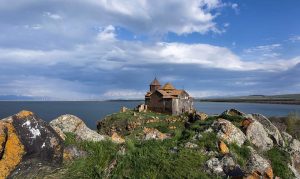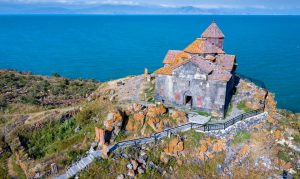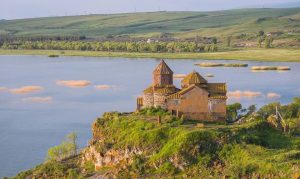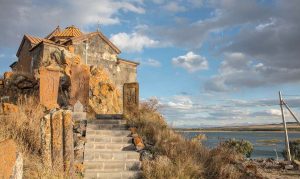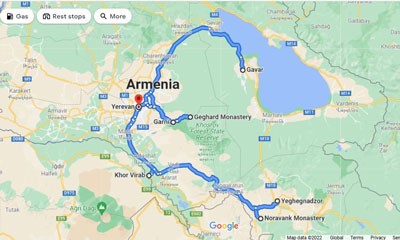Hayravank
HAYRAVANK
Hayravank Monastery is located on the banks Lake Sevan, a short drive away from the Noratus Cemetery, one of Armenia’s most amazing sights with its multitude of medieval khachkars.
This lakeside jewel was built between the 9th and 12th centuries. Its oldest structure is St. Stepanos Church, which is distinguished for its square-based central dome. Built from black limestone, the cross-shaped church is inscribed with its date of construction in the late 9th century.
A small chapel was added to the complex in the 10th century and was embellished two centuries later with the construction of a distinctly Armenian gavit. Historical sources referencing Hayravank mention two monks, Hovhannes and Nerses, who added a two-columned, octagonal domed hall to the chapel in 1211.
According to legend, in the 1380s a monk by the name of Hovhan was living at Hayravank when the troops of Tamerlane invaded the land. When Tamerlane reached Hayravank, Hovhan decided to jump into the lake rather than watch the obliteration of his beloved monastery. Yet God miraculously saved him by granting him the ability to walk across the lake.
Tamerlane, shocked by the sight of a man walking on water, promised Hovhan that if he would meet with him, the conqueror would grant whatever the monk wished. Hovhan agreed and met with Tamerlane, pleading with him not to kill anyone who could fit inside the monastery. Tamerlane agreed, and people began to seek refuge inside the compound. Surprisingly, everyone was able to fit inside, for Hovhan was turning people into doves so as to allow more space in the churches for people to escape death.
From that point on, the monastery was called Hovhannavank or Hayr Hovhan Monastery, meaning “Father Hovhan’s Monastery”. The compound has also been called Ayrivank, meaning Cave Monastery, for according to another legend, the Hayravank was once connected to Spitak Berd Castle (also known as Berdkunk Fortress) by a series of underground tunnels.
Monastic life at Hayravank ceased in the 19th century, and it was not until the 1980s that the monastery was renovated and opened to the public. In the fenced yard of Hayravank are old tombstones and scattered khachkars (cross-stones).


